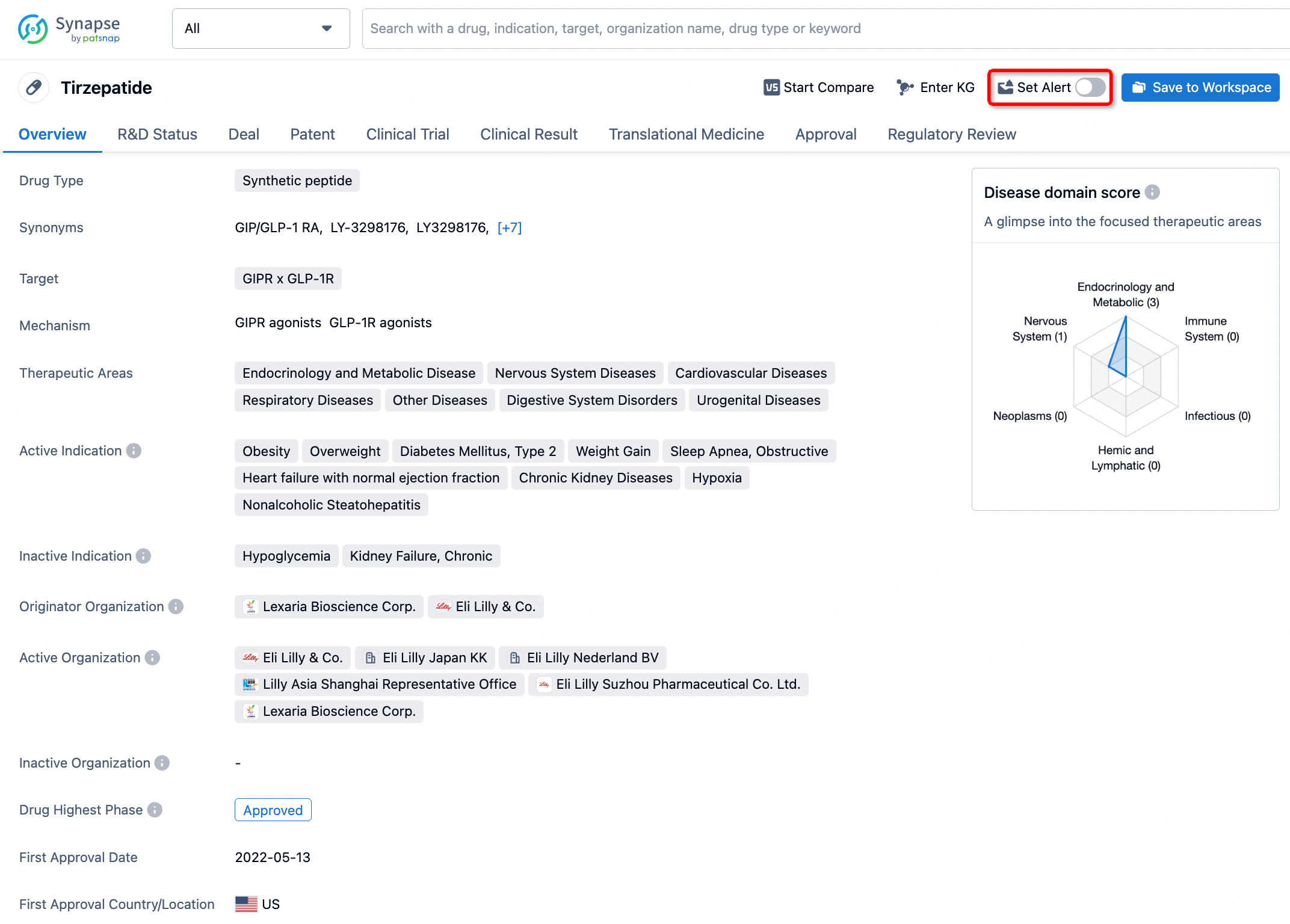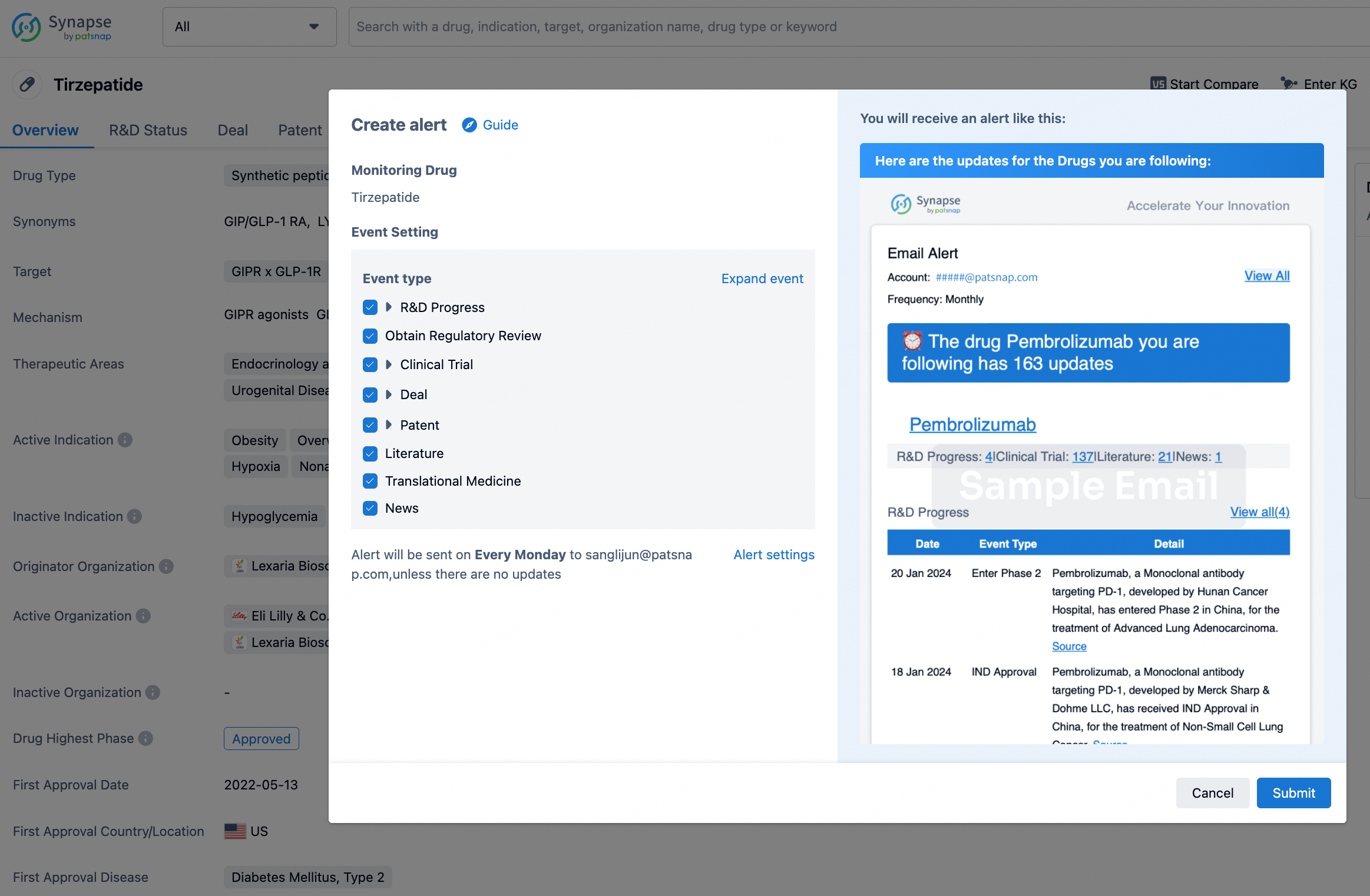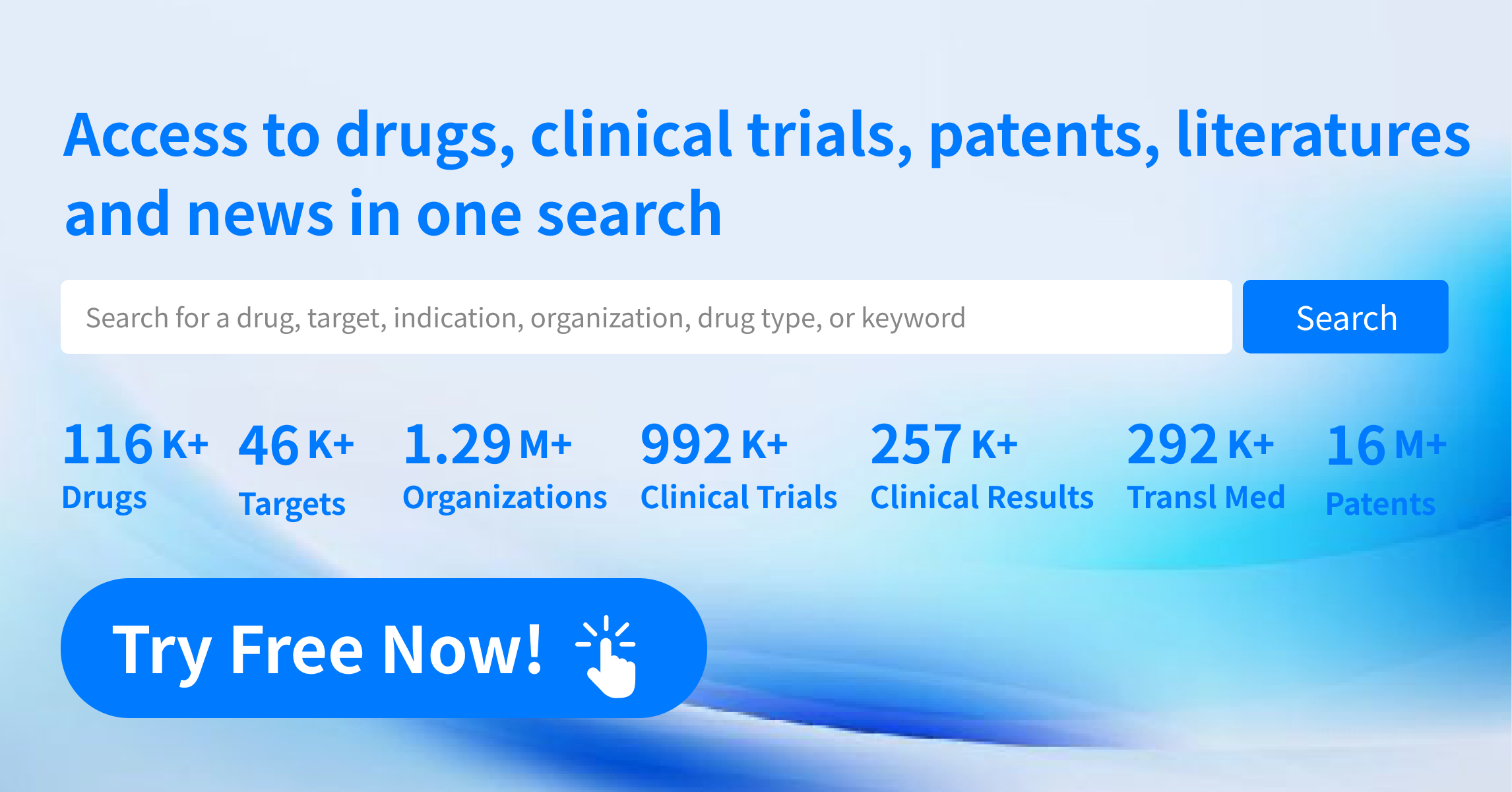Request Demo
What is Cyclofenil used for?
15 June 2024
Cyclofenil: An Overview
Cyclofenil is a synthetic, non-steroidal selective estrogen receptor modulator (SERM) primarily known for its role in managing conditions related to reproductive health. Marketed under various trade names such as Fertodur and Sexovid, Cyclofenil has garnered attention within the medical community for its unique mechanism of action and therapeutic potential. Initially developed for treating infertility and certain menstrual disorders, Cyclofenil has also been investigated for broader applications, including osteoporosis and specific breast cancer treatments.
Research institutions globally have been exploring the efficacy and safety profile of Cyclofenil. While it has not achieved the same level of widespread acceptance as other SERMs like tamoxifen or raloxifene, the drug continues to be a subject of interest due to its distinctive properties and potential benefits. Cyclofenil's primary indications include the treatment of secondary amenorrhea and anovulatory infertility. Over time, researchers have also examined its effects on bone density, hoping to unlock new indications for this versatile compound.
Cyclofenil Mechanism of Action
Cyclofenil functions by modulating estrogen receptors in the body, displaying both agonistic and antagonistic properties depending on the target tissue. This dual functionality is characteristic of SERMs, which differentiate them from other hormone therapies that might act solely as agonists or antagonists. Cyclofenil binds to estrogen receptors in various tissues, mimicking the action of estrogen in some cases while inhibiting it in others. This selective binding is instrumental in its ability to regulate reproductive processes and manage estrogen-dependent conditions.
In reproductive tissues such as the ovaries, Cyclofenil acts as an estrogen agonist, promoting follicular development and ovulation. This makes it beneficial for women experiencing anovulatory infertility, where the lack of ovulation is a primary issue. Conversely, in tissues where excessive estrogen activity could be detrimental, such as in certain types of breast cancer, Cyclofenil exhibits antagonistic properties, blocking the proliferative effects of estrogen and inhibiting tumor growth.
Cyclofenil's mechanism of action also extends to bone metabolism. Estrogen plays a crucial role in maintaining bone density, and Cyclofenil's ability to mimic estrogen's effects on bone tissue has prompted investigations into its potential as a treatment for osteoporosis. While not as extensively studied as some other SERMs in this context, Cyclofenil's bone-protective properties remain an area of ongoing research.
How to Use Cyclofenil
Cyclofenil is typically administered orally, in tablet form. The dosage and duration of treatment depend on the specific condition being addressed and the individual patient's response to the medication. For treating secondary amenorrhea or anovulatory infertility, a common regimen involves administering the drug for specific days within the menstrual cycle, often from day 5 to day 15. The precise dosage can vary, but it usually ranges from 400 mg to 800 mg per day, divided into two doses.
The onset time for Cyclofenil's therapeutic effects can vary. In the context of infertility treatment, ovulation induction may occur within the first cycle of treatment, although some patients may require multiple cycles to achieve the desired outcome. For menstrual disorders, improvements might be observed within a few cycles of consistent use.
It is important to follow the prescribing physician's instructions carefully to optimize the drug's efficacy and minimize potential side effects. Patients are typically advised to undergo regular monitoring while on Cyclofenil to assess its impact and make any necessary adjustments to the treatment regimen.
What are Cyclofenil Side Effects
Like any medication, Cyclofenil is associated with a range of potential side effects, although not all patients will experience them. Common side effects include gastrointestinal disturbances such as nausea, bloating, and abdominal discomfort. Some patients may also experience headaches, dizziness, or fatigue. These side effects are generally mild and tend to resolve as the body adjusts to the medication.
However, there are more serious side effects that warrant closer attention. Cyclofenil can increase the risk of thromboembolic events, such as deep vein thrombosis (DVT) and pulmonary embolism (PE). Therefore, patients with a history of blood clots or cardiovascular issues should use Cyclofenil with caution and under strict medical supervision. Other potential risks include liver enzyme alterations and, in rare cases, liver toxicity. Regular liver function tests may be recommended to monitor for any adverse hepatic effects.
Contraindications for Cyclofenil use include pregnancy, as the drug can potentially harm the developing fetus. Women who are pregnant or planning to become pregnant should avoid using Cyclofenil. Additionally, patients with a history of hormone-sensitive cancers, such as certain types of breast or uterine cancer, should not use Cyclofenil unless specifically advised by a healthcare provider.
What Other Drugs Will Affect Cyclofenil
Cyclofenil's efficacy and safety profile can be influenced by the concurrent use of other medications. Drug interactions may either potentiate Cyclofenil's effects, diminish its therapeutic benefits, or increase the risk of adverse reactions. It is crucial to inform the prescribing physician of all medications, supplements, and herbal products being used to avoid potential interactions.
For instance, Cyclofenil may interact with other hormone therapies, such as oral contraceptives or hormone replacement therapy (HRT). These interactions can alter the drug's effectiveness or amplify side effects related to hormonal imbalances. Additionally, medications that affect liver enzymes, such as certain antifungal agents, antibiotics, and anticonvulsants, can impact Cyclofenil's metabolism and clearance from the body. This may necessitate dosage adjustments or increased monitoring to ensure safe and effective treatment.
Anticoagulants, including warfarin and other blood thinners, can also interact with Cyclofenil, increasing the risk of bleeding complications. Patients on anticoagulant therapy should be closely monitored when starting or stopping Cyclofenil to manage this risk appropriately.
In conclusion, while Cyclofenil offers promising therapeutic benefits for certain reproductive and potentially other health conditions, its use requires careful consideration of potential side effects and drug interactions. Ongoing research continues to explore its full potential, aiming to optimize its use and uncover new applications for this multifaceted medication. As always, patients should work closely with their healthcare providers to ensure that Cyclofenil is used safely and effectively, tailored to their specific medical needs.
Cyclofenil is a synthetic, non-steroidal selective estrogen receptor modulator (SERM) primarily known for its role in managing conditions related to reproductive health. Marketed under various trade names such as Fertodur and Sexovid, Cyclofenil has garnered attention within the medical community for its unique mechanism of action and therapeutic potential. Initially developed for treating infertility and certain menstrual disorders, Cyclofenil has also been investigated for broader applications, including osteoporosis and specific breast cancer treatments.
Research institutions globally have been exploring the efficacy and safety profile of Cyclofenil. While it has not achieved the same level of widespread acceptance as other SERMs like tamoxifen or raloxifene, the drug continues to be a subject of interest due to its distinctive properties and potential benefits. Cyclofenil's primary indications include the treatment of secondary amenorrhea and anovulatory infertility. Over time, researchers have also examined its effects on bone density, hoping to unlock new indications for this versatile compound.
Cyclofenil Mechanism of Action
Cyclofenil functions by modulating estrogen receptors in the body, displaying both agonistic and antagonistic properties depending on the target tissue. This dual functionality is characteristic of SERMs, which differentiate them from other hormone therapies that might act solely as agonists or antagonists. Cyclofenil binds to estrogen receptors in various tissues, mimicking the action of estrogen in some cases while inhibiting it in others. This selective binding is instrumental in its ability to regulate reproductive processes and manage estrogen-dependent conditions.
In reproductive tissues such as the ovaries, Cyclofenil acts as an estrogen agonist, promoting follicular development and ovulation. This makes it beneficial for women experiencing anovulatory infertility, where the lack of ovulation is a primary issue. Conversely, in tissues where excessive estrogen activity could be detrimental, such as in certain types of breast cancer, Cyclofenil exhibits antagonistic properties, blocking the proliferative effects of estrogen and inhibiting tumor growth.
Cyclofenil's mechanism of action also extends to bone metabolism. Estrogen plays a crucial role in maintaining bone density, and Cyclofenil's ability to mimic estrogen's effects on bone tissue has prompted investigations into its potential as a treatment for osteoporosis. While not as extensively studied as some other SERMs in this context, Cyclofenil's bone-protective properties remain an area of ongoing research.
How to Use Cyclofenil
Cyclofenil is typically administered orally, in tablet form. The dosage and duration of treatment depend on the specific condition being addressed and the individual patient's response to the medication. For treating secondary amenorrhea or anovulatory infertility, a common regimen involves administering the drug for specific days within the menstrual cycle, often from day 5 to day 15. The precise dosage can vary, but it usually ranges from 400 mg to 800 mg per day, divided into two doses.
The onset time for Cyclofenil's therapeutic effects can vary. In the context of infertility treatment, ovulation induction may occur within the first cycle of treatment, although some patients may require multiple cycles to achieve the desired outcome. For menstrual disorders, improvements might be observed within a few cycles of consistent use.
It is important to follow the prescribing physician's instructions carefully to optimize the drug's efficacy and minimize potential side effects. Patients are typically advised to undergo regular monitoring while on Cyclofenil to assess its impact and make any necessary adjustments to the treatment regimen.
What are Cyclofenil Side Effects
Like any medication, Cyclofenil is associated with a range of potential side effects, although not all patients will experience them. Common side effects include gastrointestinal disturbances such as nausea, bloating, and abdominal discomfort. Some patients may also experience headaches, dizziness, or fatigue. These side effects are generally mild and tend to resolve as the body adjusts to the medication.
However, there are more serious side effects that warrant closer attention. Cyclofenil can increase the risk of thromboembolic events, such as deep vein thrombosis (DVT) and pulmonary embolism (PE). Therefore, patients with a history of blood clots or cardiovascular issues should use Cyclofenil with caution and under strict medical supervision. Other potential risks include liver enzyme alterations and, in rare cases, liver toxicity. Regular liver function tests may be recommended to monitor for any adverse hepatic effects.
Contraindications for Cyclofenil use include pregnancy, as the drug can potentially harm the developing fetus. Women who are pregnant or planning to become pregnant should avoid using Cyclofenil. Additionally, patients with a history of hormone-sensitive cancers, such as certain types of breast or uterine cancer, should not use Cyclofenil unless specifically advised by a healthcare provider.
What Other Drugs Will Affect Cyclofenil
Cyclofenil's efficacy and safety profile can be influenced by the concurrent use of other medications. Drug interactions may either potentiate Cyclofenil's effects, diminish its therapeutic benefits, or increase the risk of adverse reactions. It is crucial to inform the prescribing physician of all medications, supplements, and herbal products being used to avoid potential interactions.
For instance, Cyclofenil may interact with other hormone therapies, such as oral contraceptives or hormone replacement therapy (HRT). These interactions can alter the drug's effectiveness or amplify side effects related to hormonal imbalances. Additionally, medications that affect liver enzymes, such as certain antifungal agents, antibiotics, and anticonvulsants, can impact Cyclofenil's metabolism and clearance from the body. This may necessitate dosage adjustments or increased monitoring to ensure safe and effective treatment.
Anticoagulants, including warfarin and other blood thinners, can also interact with Cyclofenil, increasing the risk of bleeding complications. Patients on anticoagulant therapy should be closely monitored when starting or stopping Cyclofenil to manage this risk appropriately.
In conclusion, while Cyclofenil offers promising therapeutic benefits for certain reproductive and potentially other health conditions, its use requires careful consideration of potential side effects and drug interactions. Ongoing research continues to explore its full potential, aiming to optimize its use and uncover new applications for this multifaceted medication. As always, patients should work closely with their healthcare providers to ensure that Cyclofenil is used safely and effectively, tailored to their specific medical needs.
How to obtain the latest development progress of all drugs?
In the Synapse database, you can stay updated on the latest research and development advances of all drugs. This service is accessible anytime and anywhere, with updates available daily or weekly. Use the "Set Alert" function to stay informed. Click on the image below to embark on a brand new journey of drug discovery!
AI Agents Built for Biopharma Breakthroughs
Accelerate discovery. Empower decisions. Transform outcomes.
Get started for free today!
Accelerate Strategic R&D decision making with Synapse, PatSnap’s AI-powered Connected Innovation Intelligence Platform Built for Life Sciences Professionals.
Start your data trial now!
Synapse data is also accessible to external entities via APIs or data packages. Empower better decisions with the latest in pharmaceutical intelligence.


